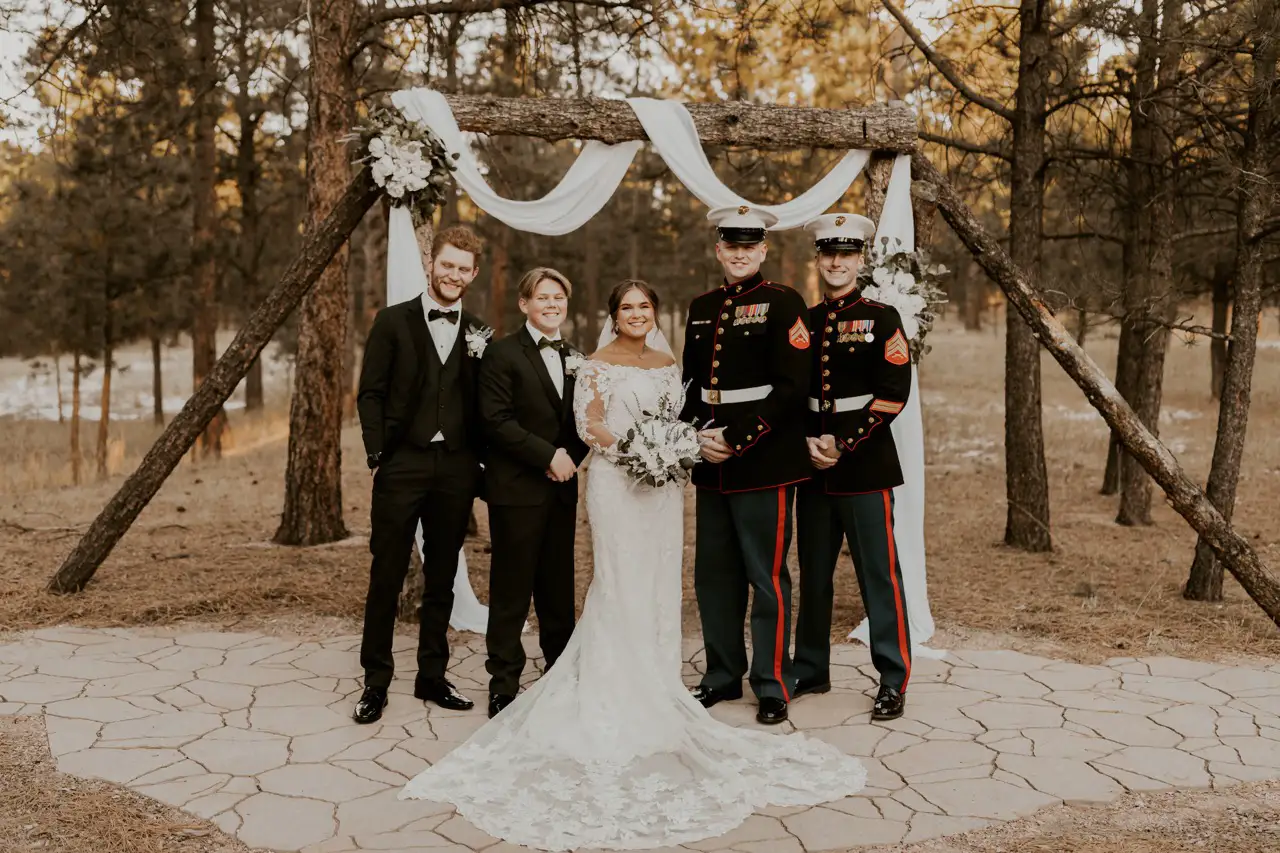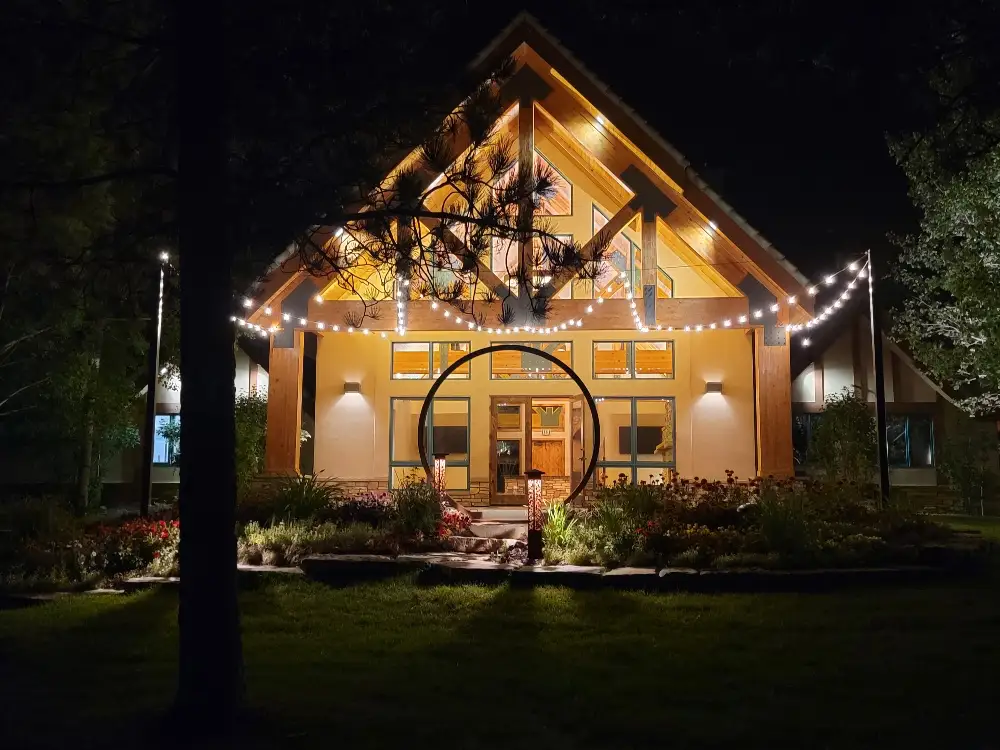Losing a loved one is an incredibly difficult experience, a journey through grief that can feel isolating and overwhelming. In these moments, finding a way to honor the unique spirit and enduring legacy of the person you’ve lost can be a profound source of comfort and healing.
A celebration of life offers a beautiful, personalized, and often uplifting alternative or complement to traditional funeral services. Unlike a somber funeral, which typically focuses on mourning and the finality of death, a celebration of life intentionally shifts the focus to the joy, love, and cherished memories shared with the departed. It is an opportunity for family, friends, and all who were touched by their life to gather, support one another, and collectively pay tribute to a life well-lived, remembering the laughter, achievements, and impact they had on the world.
This post is designed to gently walk you through every step of organizing a truly meaningful celebration of life, from the initial, often tender, planning stages to the heartfelt execution of the event itself. We will delve into critical considerations such as thoughtful venue selection, deeply personalizing the ceremony to reflect your loved one’s essence, and incorporating special touches that will resonate with guests and create a lasting, cherished tribute.
Our aim is to empower you with the knowledge and inspiration to create an event that truly honors your loved one, fostering connection and healing during a challenging time.
Key Takeaways
- Embrace Personalization: The cornerstone of a truly memorable celebration of life is its authenticity. Every decision, from the choice of music to the style of catering, should be a deliberate reflection of your loved one’s unique personality, passions, and the values they held dear. This personalization transforms the event from a generic gathering into a heartfelt tribute.
- Focus on Storytelling: The human experience is woven with stories, and a celebration of life is the perfect canvas for sharing them. Actively create and encourage opportunities for guests to share their favorite memories, anecdotes, and the profound impact the departed had on their lives. These shared narratives are the heart of the celebration, weaving a rich tapestry of remembrance.
- Choose a Meaningful Venue: The setting plays a pivotal role in shaping the atmosphere of the event. You may want to consider a dedicated event venue that offers a warm, welcoming, and adaptable atmosphere that can provide the ideal backdrop, alleviating logistical burdens and enhancing the overall experience.
- Involve Others in the Planning: Navigating grief while planning an event can be overwhelming. Do not hesitate to reach out and delegate tasks. Involving close family members and friends in the planning process not only lightens your load but also provides them with a tangible way to express their love and grief, fostering a sense of collective support and shared purpose.
- Create Lasting Keepsakes: Offering guests a small, thoughtful token to remember the day can extend the impact of the celebration long after it concludes. This could be a memorial card featuring a cherished photo and a favorite quote, a small plant to symbolize enduring life, or a packet of flower seeds to be planted in memory. These keepsakes serve as tangible reminders of the love and connection shared.
Planning the Celebration of Life: A Step-by-Step Guide
Organizing a celebration of life can feel like a monumental task, especially when navigating the complexities of grief. By breaking the process down into manageable, actionable steps, you can approach the planning with greater clarity and purpose, ensuring a meaningful and memorable event without adding unnecessary stress to an already challenging period.
1. Determine the Guest List and Budget
Before any other decisions can be made, establishing an estimated guest count is paramount. This number will serve as a foundational element, influencing everything from your choice of venue to catering requirements and the overall logistical scope of the event. Begin by creating a comprehensive list of individuals who were significant in your loved one’s life: immediate and extended family members, close friends, colleagues, neighbors, and members of any clubs or organizations they belonged to. It’s often helpful to brainstorm with other family members to ensure no one important is overlooked. This initial list doesn’t need to be final but provides an important starting point for estimating scale.
Concurrently, it’s essential to establish a realistic budget. A celebration of life does not need to be extravagant to be deeply meaningful. There are countless ways to create a beautiful and heartfelt tribute on a modest budget, and conversely, options for more elaborate affairs. Consider what financial resources are available and prioritize what aspects of the event are most important to you and your family. Key budget categories typically include:
- Venue Rental: This can vary significantly based on location, size, and amenities.
- Catering: Food and beverages are often a significant expense. Options range from full-service catering to potluck-style gatherings or simple refreshments.
- Decorations and Flowers: These contribute to the atmosphere and can be customized to fit any budget.
- Audiovisual Equipment: For slideshows, music, or live streaming.
- Officiant/Celebrant Fees: If you choose to hire a professional.
- Keepsakes/Favors: Small tokens for guests.
- Photography/Videography: To capture the memories.
Open communication about the budget among those contributing to the planning can prevent misunderstandings and ensure that the event remains financially feasible while still honoring your loved one’s memory effectively.
2. Choose a Date, Time, and Venue
Selecting the appropriate date and time for the celebration requires careful consideration. Unlike traditional funerals, which often occur within days of passing, a celebration of life offers greater flexibility. This extended timeline can be particularly beneficial, allowing out-of-town guests ample time to make travel arrangements and ensuring that key family members can be present. When choosing a date, consider:
- Travel Logistics: Avoid major holidays or peak travel seasons if many guests will be traveling.
- Availability of Key Individuals: Ensure that immediate family and close friends who wish to speak or participate are available.
- Venue Availability: Popular venues can book up quickly, especially on weekends.
- Emotional Readiness: Allow yourselves and other close family members sufficient time to process grief before hosting the event.
The venue you select will profoundly influence the overall atmosphere and logistical flow of the event. It sets the stage for remembrance and connection.
Choosing a dedicated venue can help alleviate many logistical burdens, allowing you and your family to focus on what truly matters: remembering and celebrating your loved one.
3. Decide on the Tone and Theme
The beauty of a celebration of life lies in its adaptability. The tone can range from deeply reflective and reverent to joyfully celebratory and lighthearted, depending entirely on the personality of your loved one and the wishes of the family. If the departed was known for their vibrant sense of humor and zest for life, incorporating elements of joy, laughter, and perhaps even playful tributes would be entirely appropriate. Conversely, if they were more reserved, introspective, or found solace in quiet contemplation, a more formal and reflective tone, emphasizing peace and serenity, might be more fitting.
Developing a theme can provide a cohesive thread throughout the event, making it feel even more personal and memorable. The theme should organically emerge from your loved one’s passions, hobbies, and interests. For instance:
- Nature Lover: Incorporate their favorite flowers, plants, or natural elements into the décor. Consider an outdoor venue or a space with large windows overlooking natural landscapes.
- Avid Reader: Create a cozy reading nook with some of their favorite books, or encourage guests to bring a book that reminds them of the deceased to exchange. A literary theme could involve quotes from their favorite authors or genres.
- Travel Enthusiast: Decorate with maps, globes, and photos from their travels. Serve food and drinks inspired by their favorite destinations. Guests could share stories of adventures they had with the departed.
- Artist/Musician: Display their artwork or instruments. Play their favorite music or have live musicians perform pieces that were meaningful to them. Guests could be invited to contribute to a collaborative art piece.
- Sports Fan: Incorporate team colors, jerseys, and memorabilia. Guests could wear their favorite team apparel. A casual, tailgate-style gathering might be fitting.
The key is to make the theme a genuine reflection of the individual, ensuring that every detail contributes to a heartfelt and authentic tribute.
4. Plan the Ceremony and Program
The ceremony is often considered the heart of the celebration of life, providing a structured yet flexible opportunity for collective remembrance. It’s a time to share stories, read poems or passages that were meaningful to your loved one, and immerse yourselves in their favorite music. You might ask a family member, a close friend, or a professional celebrant to lead the ceremony, guiding guests through the various elements of the program.
When planning the program, consider including a thoughtful blend of elements that allow for both reflection and shared joy:
- Welcome and Opening Remarks: A brief, heartfelt welcome to guests, expressing gratitude for their presence, and a clear explanation of the purpose of the celebration – to honor and remember a cherished life.
- Readings and Poems: Select readings that held significance for your loved one, or choose poems, prose, or spiritual passages that beautifully capture their spirit, values, or life philosophy. These can be read by family members, friends, or the officiant.
- Music: Music has an unparalleled ability to evoke emotions and memories. Curate a playlist of your loved one’s favorite songs, genres, or pieces that hold significant meaning. Consider live music, such as a solo musician, a small ensemble, or even a family member performing a special piece. Music can be played as guests arrive, during moments of reflection, or as a central part of the program.
- Eulogies and Tributes: This is a central component where invited family members and friends share their favorite memories, anecdotes, and personal stories about the deceased. Encourage speakers to focus on positive, uplifting recollections that highlight the individual’s character, achievements, and the impact they had on others. You might also include an open-mic session for spontaneous tributes, though it’s often wise to have a few prepared speakers to set the tone.
- Moment of Silence or Reflection: A quiet moment for guests to privately remember and reflect on their personal connection with the loved one. This can be accompanied by soft music or simply held in peaceful stillness.
- Visual Tributes: A slideshow or video montage of photographs and home movies, set to meaningful music, can be a powerful way to visually narrate the story of their life. This can be played on a loop throughout the event or as a dedicated segment during the ceremony.
- Closing Remarks: A final farewell, expressing gratitude to all who attended and participated, and perhaps a concluding thought or blessing that encapsulates the spirit of the celebration.
5. Incorporate Personal Touches
The most memorable celebrations of life are those that are rich with personal touches, reflecting the unique personality and passions of the person being honored. These thoughtful details transform the event into a truly bespoke tribute. Here are several ideas to consider:
- Memory Table/Display: Dedicate a prominent area to a memory table or display. Adorn it with cherished photographs from different stages of their life, awards, trophies, favorite books, hobbies, travel souvenirs, or any other significant mementos that tell the story of your loved one’s journey. This visual narrative invites guests to reminisce and connect.
- Tribute Video/Slideshow: As mentioned, a professionally compiled slideshow or video of photos and home movies, carefully curated and set to their favorite music, can be an incredibly poignant and powerful tribute. It allows everyone to visually experience the highlights of their life.
- Memory Jar/Guest Book: Provide guests with small slips of paper and pens, inviting them to write down their favorite memory, a funny anecdote, or a message to the deceased. These can be collected in a decorative jar or box, to be read aloud during the ceremony or compiled into a cherished scrapbook for the family. A traditional guest book can also be enhanced by asking guests to share a brief memory alongside their signature.
- Favorite Foods and Drinks: Food and drink often bring people together and evoke strong memories. Serving your loved one’s favorite dishes, snacks, or beverages can be a simple yet profoundly comforting way to honor their memory. This could range from a full catered meal featuring their preferred cuisine to a dessert bar with their favorite sweets, or even a signature cocktail named in their honor.
- Keepsakes/Favors: Offer guests a small, tangible token to take home, serving as a lasting reminder of the day and the person being celebrated. Ideas include memorial cards with a favorite photo and quote, small packets of flower or tree seeds (symbolizing growth and continuity), custom bookmarks, or even small, personalized items related to their hobbies or passions.
- Interactive Activities: Depending on your loved one’s personality, consider interactive elements. If they loved gardening, guests could plant a small seed in a pot to take home. If they were artistic, a communal canvas where guests add a brushstroke could be a beautiful collective tribute. A butterfly release or dove release can also be a symbolic and moving gesture.
- Live Guest Contributions: Beyond formal eulogies, encourage guests to share brief, informal memories or thoughts. This can be done through an open mic session, or by simply circulating among guests and inviting them to share with a small group. The spontaneity can lead to truly heartwarming moments.
Frequently Asked Questions
What is the difference between a funeral and a celebration of life?
The primary distinction lies in their focus and timing. A funeral is a more traditional, often somber, ceremony typically held shortly after a person’s death, focusing on mourning, religious rites, and the formal disposition of the body. A celebration of life, conversely, is a more personalized and uplifting event that centers on commemorating the deceased’s life, achievements, and positive impact. Celebrations of life often occur weeks or even months after a person’s passing, allowing more time for thoughtful planning, for out-of-town guests to make travel arrangements, and for the immediate family to navigate their initial grief before hosting a larger gathering.
Who should I invite to a celebration of life?
The guest list for a celebration of life is typically broader and more inclusive than a traditional funeral. You should invite anyone who was important in your loved one’s life, including immediate and extended family members, close friends, colleagues, neighbors, and members of any clubs, organizations, or communities they were a part of. The guest list can be as large or as intimate as you and your family prefer, reflecting the scope of your loved one’s connections.
What should I wear to a celebration of life?
The dress code for a celebration of life is generally more relaxed and less formal than for a traditional funeral. While it’s always a good idea to check with the family for any specific requests (e.g., wearing a particular color that was the deceased’s favorite), business casual attire is usually a safe and appropriate choice. The emphasis is often on comfort and respect, rather than strict formality. Some families might even encourage guests to wear bright colors to reflect the celebratory nature of the event.
Do I need to bring a gift?
It is generally not necessary to bring a physical gift to a celebration of life. Your presence and support are the most valued contributions. However, a heartfelt sympathy card expressing your condolences and sharing a memory of the deceased is always a thoughtful gesture. Many families also appreciate donations made in the loved one’s name to a charity or cause that was important to them, in lieu of flowers or other gifts.
How do I choose a theme for a celebration of life?
Choosing a theme can beautifully unify the event and make it profoundly personal. Start by reflecting on your loved one’s passions, hobbies, and unique personality. What did they love to do? What were they known for? Was it a particular hobby like fishing, painting, or gardening? A favorite sports team, a specific genre of music, or a beloved travel destination? The theme can be as subtle as a color scheme based on their favorite hues or as elaborate as a full tribute to their favorite movie or era. For example, for a passionate gardener, you could have a flower-arranging station or give out seed packets. For a book lover, a book exchange or a display of their favorite literary works. For a musician, a live band playing their favorite songs or an open mic for musical tributes. The more authentically the theme reflects their individuality, the more meaningful and comforting the event will be for everyone involved.
What if some important family members or friends cannot attend?
In our increasingly connected world, technology offers wonderful solutions to bridge geographical distances. Consider live-streaming the ceremony or key moments of the celebration for those who are unable to attend in person. You can also create a dedicated digital memorial page or online guestbook where absent guests can upload photos, videos, written tributes, and share their condolences and memories. This ensures that everyone, regardless of their location, has an opportunity to participate in the remembrance and feel connected to the event.
How can children be involved in a celebration of life?
Involving children in a celebration of life can be a very healing and important experience for them, helping them to process their grief and feel included. The level of involvement should be tailored to their age and comfort level. Younger children might help with simple tasks like handing out programs, selecting music, or creating artwork to display. Older children and teenagers could read a poem, share a short memory, help create a photo montage, or assist with greeting guests. Providing a quiet activity corner with coloring books, crafts, or age-appropriate books about grief can also be helpful for younger attendees during longer ceremonies, allowing them to engage in their own way.
How long should a celebration of life last?
A: The duration of a celebration of life is flexible and depends on the program you’ve planned and the number of guests. Typically, a ceremony portion might last 30-60 minutes, followed by a reception or gathering that can extend for 2-4 hours. It’s important to strike a balance, ensuring there’s enough time for all planned activities and for guests to mingle and share memories, without making the event feel overly long or exhausting, especially for those who are grieving.
Should I provide food and drinks?
Providing refreshments is a common and appreciated gesture at a celebration of life, as it encourages guests to linger, socialize, and share memories in a more relaxed setting. The type of food and drink can vary widely based on your budget, the time of day, and the overall tone of the event. Options range from light appetizers and beverages, a full meal, or even a potluck where guests bring dishes. Serving your loved one’s favorite foods can add a very personal and comforting touch.
Conclusion
Organizing a celebration of life is a profound act of love and remembrance, a testament to the enduring impact of a cherished individual. It provides a vital opportunity to honor the unique journey of a loved one, to share cherished memories, and to find solace in the collective embrace of family and friends. By focusing on personalization, thoughtful planning, and creating an atmosphere that truly reflects the spirit of the departed, you can craft an event that is not only a tribute but also a powerful source of comfort, connection, and healing for all who attend.



